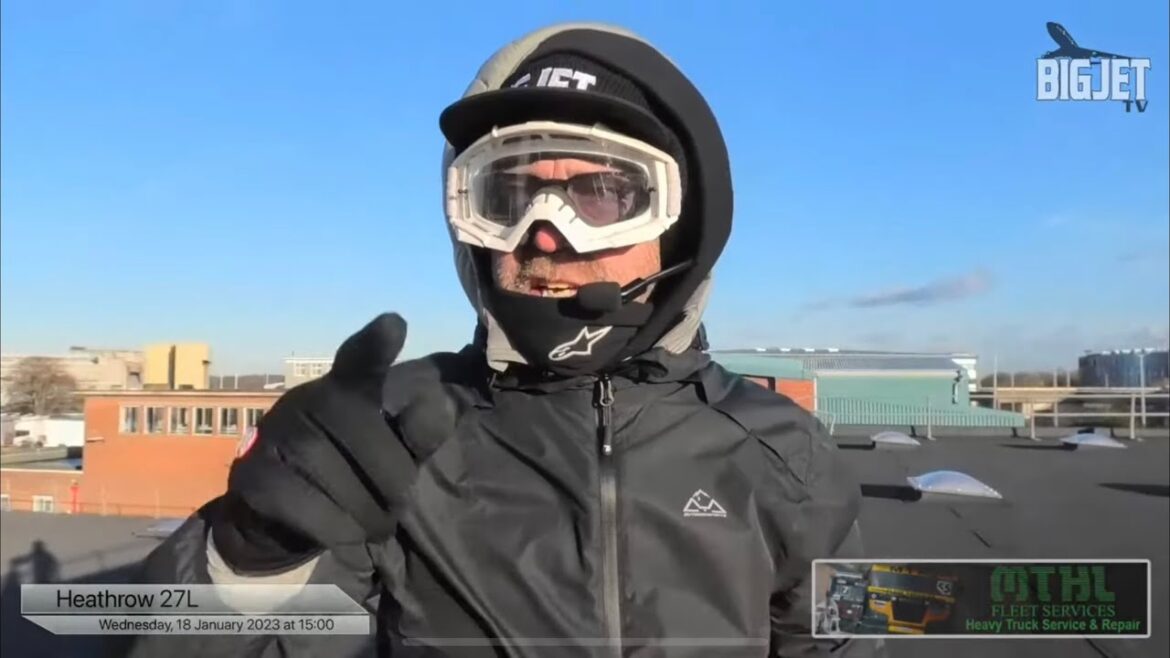Capt Dave Taxi/De-Ice/Dep at 03:32:00
#heathrow #avgeek #plane #aviation #planespotting
Our guidelines for your happy online chat experience
Please make new Members feel welcome.
Please keep chat clean and friendly.
Please stay on topic and respect those wanting to chat about the subject.
Please do not discuss politics, or sports
Please keep ‘personal’ chat to outside pages and groups
Please do not discuss personal conditions.
Please do not ask personal questions.
———————————————————————————————————–
To enjoy exclusive Member Only chat and content, checkout my 3-Tier Channel Membership and join us on International trips as well as Airside and Feature Shows.
https://www.youtube.com/channel/UCkQef3Fidr7tm3gNuXgGKPw/join
———————————————————————————————————–
You can read all about Big Jet TV and how we put your money to work at www.bigjet.tv


29 Comments
AAAAAAAAAA
Love the Thai Boeing 777 HS-TTA at 03:14:50
Nice fox below G-XLEK at 4:44:42 ………. 🏴👍
I always can’t help myself but I always have to look at that BEAUTIFUL Concorde
8 mins 25 secs in – Virgin A350 (Ruby Slipper G-VDOT) is my son Daniel flying the departure to JFK. Always a proud Mum 👌
3:32:00 De-icing
Foxy
Under the ✈️
Watched my 787 get deuces at Boston Sunday. Really impressive technique.
Let’s go live. Let go live. LET’S GO LIVE GP! 😂
Hi,
I'm a deicer at Heathrow for BA and was on shift in this video…we use kilfrost type 1 (the orange stuff) on all departures and the jedi south/delta PADs…you use one man Operations with live engines running
Watching now from the beginning….loving all of Jerry's Star Wars voices and references! 😅😆🤣
Loving seeing Concorde during this stream
Sandwich truck music 😂
Jerry, have you ever streamed from the Heathrow Observation Deck? 🛫✈🛬 BTW… I too love the sound of 'prop'… brings back childhood memories 👍
All queuing up to destroy our planet😢
ICEING BET THAT COST A FEW KKKs 2 Airlines ?
Type I is orange in color and is de-ice, Type IV is green and is anti-ice, it keeps ice/snow from sticking again for a limited amount of time. The captain is told the times when they begin applying, and when they end. It gives the flight crew time to get to the runway and take off.
At my airport, it's still done from an open bucket with rather antiquated equipment, but it works. Just very uncomfortable for the ramper in the bucket. Which I have done, not fun.
The engines are not sprayed.
It depends on the amount of snow/ice, and weather. The captain tells the de-icing crew what to spray, such as a "full bath", or just "wings and tail". Full bath starts at the nose and has to be sprayed carefully so as not to get it straight on the cockpit windows. The fuselage gets sprayed on the top, and the fluid runs down. You never spray at the doors (or windows) as the aircraft is not pressurized and the fluid will leak into the interior if the jet of fluid is directed straight at the door. You work your way down and to the wings, which are sprayed leading edge and back, never trailing edge and forward, wing root to the tip (winglets). You work your way rearwards to the tail and use the same principle but start at the top of the rudder. You also have to watch sensitive instruments on the side of aircraft, such as pitot tubes, probes, etc. You don't spray directly at the APU, but it tends to get some fluid on it and will smoke a bit since it is very hot. Wings and tail is just that.
Type I first, then repeat the whole process with Type IV. Times when you start and end each fluid must be given to the captain. The truck has a radio with a de-icing frequency so the de-icing crew and flight crew can communicate.
don't know why this channel just captures me. Maybe the ponies in the field of excitement of the commentator.
I thought that was a concord…didn't know they were still around.
Favorite part of take offis when the nose lifts and the tail dips.
Planes on the runway waiting for the poniies…lol. You know those pilots are lining up and wanting to take that concord for a fly…lol
the fluid degrades car surfaces like glazing or coating. Live under a flight path.
Love the prop planes. Remember the bi planes flying over the field to dust the crops.
Etihad planes are not that attractive from the outside. Lacks artistic esthetics. United artistic esthetics boring as hell
I've been on an Icelandair Jet when it was treated at Reykjavik in December weather, that took a long time. Re de-icing old motors, does anyone remember those stick on heated elements for the back window?
The live was as good as always 👍
Hey, was that an escaped animal running along at 4:49:58?
Love the Skippy reference haha 🦘 3:45:30